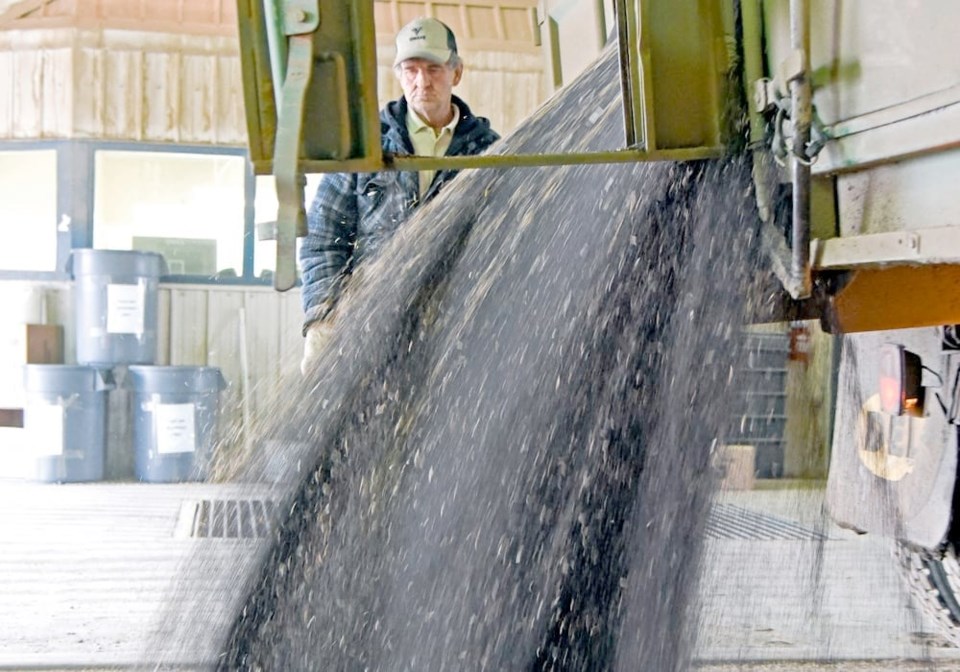SASKATOON — Mike Jubinville is sensing that grains and oilseeds markets are slowly transitioning.
“I’m willing to go as far as to say I’m no longer bearish on these agricultural markets,” the MarketsFarm analyst said during the company’s The Long and Short on Markets: Spring 2024 Edition webinar.
“But I think it’s premature for us to say we’re outright bullish.”
Markets don’t tend to pop back up after a prolonged downturn. Instead, he anticipates more of a sideways trading range for a crop like canola, with some decent pricing opportunities along the way.
He is “reasonably optimistic” farmers might see some $15 per bu. pricing over the course of the spring.
One of the reasons for his optimism is that until recently, managed money funds had the largest net short position in the history of canola futures.
“That in itself kind of opens the door for at least some corrective bounce potential and in the last month we’ve certainly seen some of that,” said Jubinville.
The one big bearish factor for canola is that the trade feels Canadian growers harvested 19 million tonnes of the crop last year, which is well above Statistics Canada’s forecast of 18.3 million tonnes.
MarketsFarm is forecasting 1.8 million tonnes of ending stocks in 2023-24, but that number could jump to a more burdensome 2.4 million tonnes if the trade is right.
Canola exports have been pathetic. He is forecasting 6.9 million tonnes for the year compared to 10.9 million tonnes of domestic crush.
China is buying, but Canadian canola has been priced out of other markets such as Japan, Mexico, Pakistan and the United Arab Emirates.
The good news is that canola has become more competitive recently with crops such as U.S. soybeans.
The premium over soybeans is about $35 per tonne, down from the astronomical level of $450 per tonne a couple of years ago.
“We have come a long way to correcting that, to the point now where I think we are very competitively priced,” said Jubinville.
A seasonal analysis shows that April to June tends to be the time of the year with the best canola prices.
“Hopefully we can see a $15 opportunity as our next potential broadside target,” he said.
Feed barley prices have finally started trading at a slight discount to imported U.S. corn after being at a significant premium during the summer months.
Jubinville thinks the barley market is still in the process of establishing how big that discount should be.
Barley is inextricably tied to corn now that feed users have become proficient at importing the commodity following the 2021 drought.
He is forecasting three million tonnes of corn imports in 2023-24. That is down from more than five million tonnes a couple of years ago but much higher than what it used to be before that.
Jubinville is forecasting two million tonnes of barley exports and 1.65 million tonnes of ending stocks, which would be the highest level in six years. A lot of that barley is in the feed surplus areas of northern Saskatchewan.
India breathed life into the pea market when it lifted import restrictions on the crop through the end of April.
That will raise exports to 2.5 million tonnes and shrink ending stocks to 156,000 tonnes. It would have been more than double that if India hadn’t opened.
India’s sudden policy change briefly pushed prices up to $14 per bu. in Alberta and western Saskatchewan. They have since come down but are still in the $12.75 to $13.30 range.
The big lingering question in the pea market is whether India once again extends its open border or soon slams shut?
“My inclination is to move out old crop while the getting is still good, because I don’t know and you can’t predict Indian government policies,” he said.
New crop values are in the mid-$10 per bu. range in Saskatchewan and upper-$10 range in Alberta.
“If (India) extends the program we could have $12 peas for fall delivery, or if they don’t and they close the door, we’re $9 peas,” said Jubinville.
The green lentil market is tethered to India’s pigeon pea prices, which remain at elevated levels following two short crops.
As long as those pigeon pea prices stay elevated, lentil prices will not fall.
Old crop prices for large green lentils are in the 80 to 82 cents per pound range, but that’s because there is basically nothing left to ship.
New crop values are around 53 cents per lb. for fall delivery, up a nickel from last week but down from the earlier highs of 58 to 60 cents.
Jubinville expects Canadian lentil acres to rise and is forecasting 2.3 million tonnes of production, up from 1.7 million tonnes last year.
If that happens, new crop values will likely fall.
Cash bids for red lentils recently climbed back to 35 cents per lb. He expects the market to hover around that level for a while as India gets set to harvest its lentil crop.
Australia produced 1.3 million tonnes of red lentils in December-January, which is down from 1.6 million tonnes last year but still a very good crop despite an El Nino scare.
Fortunately, there has been strong demand for those lentils from India due to its short pigeon pea crop.
Contact [email protected]




